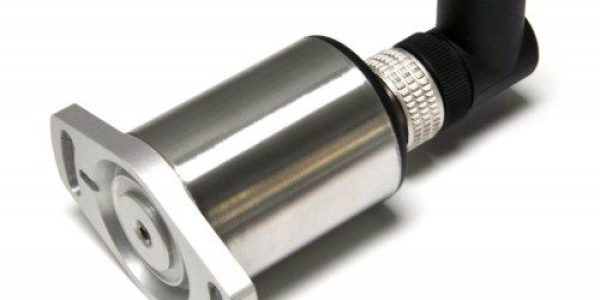A multiturn rotary encoder is a sensor that measures the angle of rotation of a shaft, as well as the number of complete revolutions that the shaft has made. This is in contrast to a single-turn encoder, which only measures the angle of rotation, 0 – 360°. Multiturn encoders are used in a variety of applications where it is important to track the position of a moving object, such as in machine tools, robotics, and automation systems.
Why are multiturn rotary encoders important?
Multiturn rotary encoders are important for a number of reasons. First, they can measure the position of an object over a much larger range than single-turn encoders. Sometimes this is simply measuring a few turns. Consider the steering wheel of a car. It may only be three complete turns from left to right, but being able to differentiate those rotations is rather important. In other applications it could be counting many more turns, such as in a ballscrew linear drive, where a rotary motion is translated into a linear actuator.
Applications of multiturn rotary encoders
Multiturn rotary encoders are used in a wide variety of applications, including:
- Machine tools: Multiturn encoders are used in machine tools to control the position of the cutting tool. This ensures that the tool is always cutting at the correct angle and depth.
- Robotics: Multiturn encoders are used in robots to control the position of the robot arm. This allows the robot to move accurately and precisely.
- Automation systems: Multiturn encoders are used in automation systems to control the position of various components. From material handling to assembly lines, multiturn encoders ensure that the system operates correctly and efficiently.
- Replacement of incremental encoders on stepper motors. Important to consider if a multiturn encoder is necessary, as an incremental encoder has the ability to record multiple rotations as long as the counter is capable and power isn’t lost.
- Other applications: Multiturn encoders are also used in a variety of other applications, such as wind turbines, medical devices, and packaging machines.

So what is an Absolute Multiturn Encoder?
It is important to distinguish between a multiturn encoder and an absolute multiturn encoder. Just as with singleturn encoders, an absolute encoder will recall its position after a loss of power, regardless of any motion that may have occurred when power wasn’t present. Traditionally, absolute multiturn encoders kept track of the number of turns by using a set of internal gears, similar to that of a clock. Some absolute multiturn encoders rely on an internal or external battery. However, over the past two decades, rotary encoders have successfully used energy harvesting systems such as Weigand Sensors, to accurately and reliably keep track of multiturn counts, even including revolutions that occur during a lack of power.
The Weigand sensor has many advantages over traditional gearing systems and battery backups. Battery backups have a finite life and lithium-ion batteries may not be allowed in some applications for safety reasons. Compared to gearing, the Weigand sensor is compact, more economical and much more robust in applications with high shock and vibration. As encoder technology trends from optical to more robust options such as magnetic and capacitive, the Weigand sensor is a much better complement to the low profile and robustness that these technologies can offer.

Multiurn encoders that are not absolute count turns while powered but lack the ability to account for any significant movement that may occur while power is not present, even if it is less than one rotation. This is because the sensor operates under the assumption that any movement while power is not present will be minimal. If at start-up the encoder notices movement of more than a few degrees it will raise an alarm. While this option may be less costly than having a formal system counting system such as gearing or a Weigand sensor, there are situations where it wouldn’t be ideal. For example, consider the scenario where a machine is disconnected from power for maintenance and a shaft is rotated as part of the disassembly/assembly process.

Conclusion
Multiturn rotary encoders are an important tool for a variety of applications. They are more versatile than single-turn encoders. Multiurn encoders are available in a variety of options, from singleturn encoders which simply count as each rotation is recorded, to more advanced absolute multiturn encoders, which track position and revolutions, regardless of any movement while the sensor is not powered. As a result, they are becoming increasingly popular in a wide range of industries.
Here are some additional benefits of using multiturn rotary encoders:
- They can be used in harsh environments, such as those with high temperatures or vibrations.
- They are relatively easy to install and maintain.
- They are available in a variety of sizes, resolutions and interface options to meet the needs of different applications.
If you are looking for a high-performance rotary encoder for your application, a multiturn encoder may be a good option to consider. Reach out to Everight Position to learn more.
"*" indicates required fields



